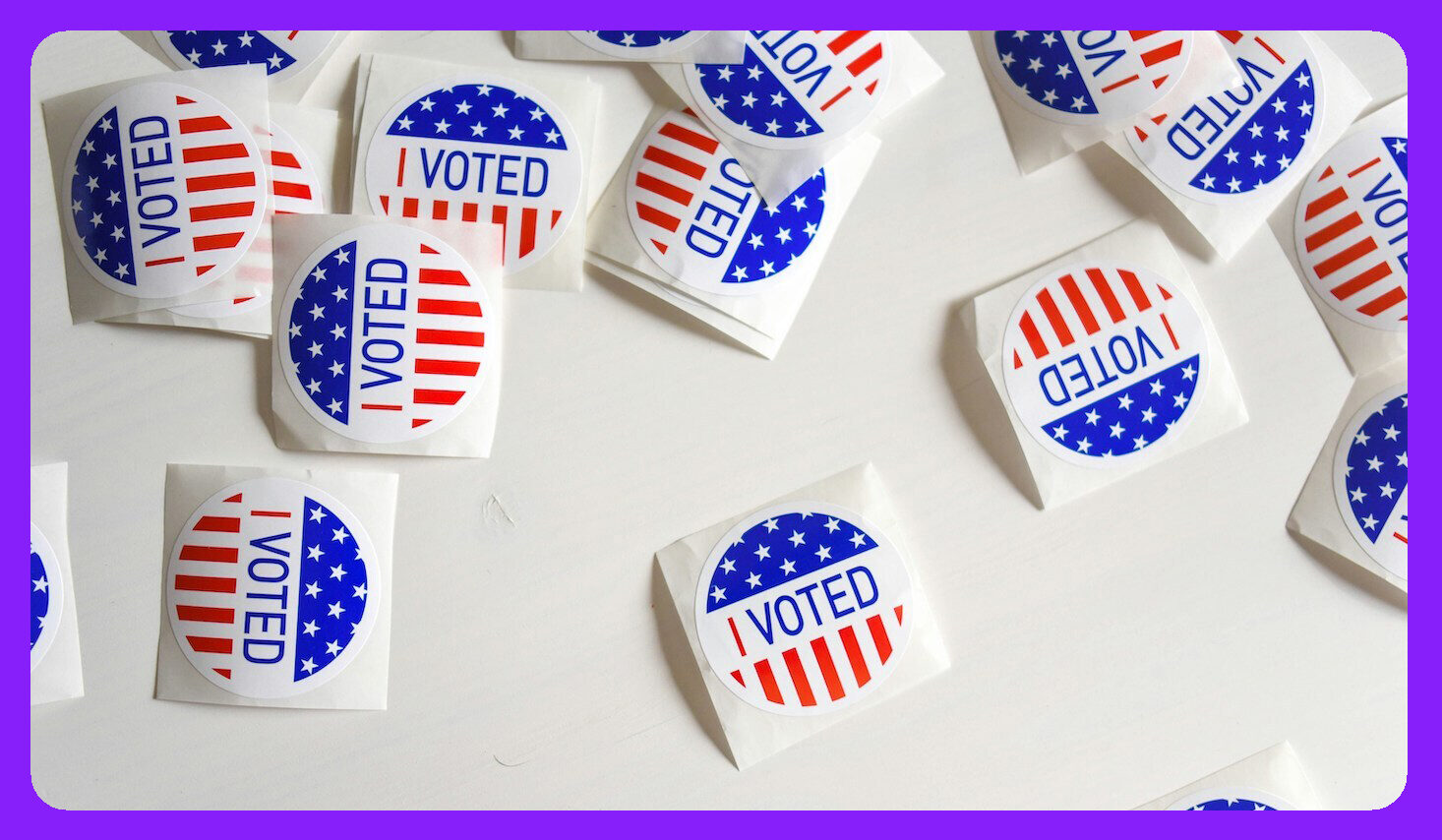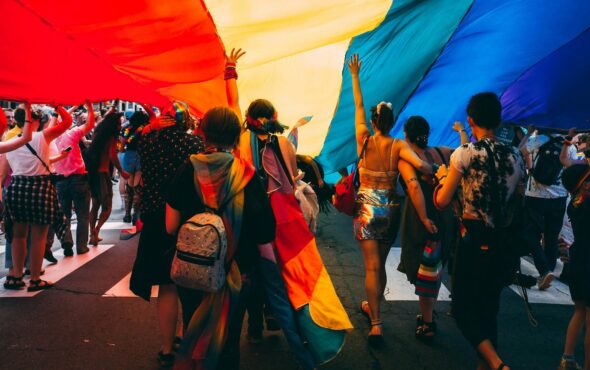
Lori Moss, a trans woman from Milwaukee, is fed up with the “nightmarish” bureaucratic process trans people must go through to make sure they are able to vote.
“It’s just like a never-ending pile of pain,” she told Uncloseted Media/Votebeat.
After a six-month process that involved filing new paperwork, getting a judge’s approval, and publishing her new name in a newspaper classified ad, Moss learned that under Wisconsin law, the gender marker on her ID still cannot be changed until she can provide proof of having had vaginoplasty surgery – an expensive, painful and time-consuming task that some trans people don’t even want. Her new ID arrived in the mail this week, listing her name but labelling her gender as “M.”
A recent study has found that trans and gender-diverse people encounter more problems than cisgender people when trying to cast a ballot. According to another study conducted by the Williams Institute, more than 800,000 trans adults are eligible to vote in the 2024 election. But about one-fourth of those [800,000] people both lack IDs that match their correct names or genders and live in states with strict voter ID laws. This may make it difficult for them to cast a ballot.
Wisconsin is one of those states. There, the law requires that all voters must “reasonably resemble” their photo ID –a barrier for any voter, including trans people undergoing physical transition, whose appearance has substantially changed since they obtained their ID.
“That could put it in the hands of the poll worker to be deciding when someone is and is not eligible,” says Rachel Orey, the director of the Elections Project at the Bipartisan Policy Center and who identifies as trans. “We know this isn’t something that poll workers are typically trained on. We’re lucky if they get any kind of sensitivity training.”
Moss’ worries – and the worries of others in the same position – are magnified this election season, as Republicans have spent more than $65 million on anti-trans advertising, including over $19 million by the Trump campaign alone. Almost 70 percent of transgender voters identify as Democrats or Democratic-leaning independents, and many feel like their lives are at stake in this election, upping the pressure they feel to cast a ballot in the upcoming election.
Moss went through the arduous process of updating her ID in part so she wouldn’t run into the kinds of problems she’s experienced with voting in the last three elections. For example, when voting in 2020, she had to bring two backup documents to verify her identity because the name on her identification did not match the name listed on the voter roll.
“The problem is that you’ve got a bunch of well-meaning people, saying ‘Well, your ID said this and you’re not that,’ or ‘Something feels a little bit off,’” she says.
“It’s a lose-lose because the more I look like [myself] and the more I am happier with myself, the more bullshit I have to deal with every single time someone sees my ID.”
Elly, who prefers to only use her first name for safety reasons, says seeing her dead name on her Texas ID made it difficult for her to present it in any situation where it was required. “There were several years where I didn’t have a primary care doctor, wasn’t going to appointments, wouldn’t get new eyeglasses. There were issues with banking and stuff like that which I was just letting fall by the wayside because I didn’t have the energy to deal with my dead name and this wrong gender trigger,” she told Uncloseted Media/Votebeat.
While Elly eventually got her name changed on her ID before Texas’ attorney general made it impossible to do so in August 2024, she thinks many trans people will skip voting altogether to avoid the intense dysphoria she experienced for so long. “Having to confront that is definitely a reason some would say, ‘I don’t want to spiral for the rest of my day for the sake of this sort of nebulous movement of the needle an infinitesimally small distance in the direction I would want to move it in,’” she says.
While the paperwork and documentation are hurdles on their own, trans voters are also weighing their safety when they determine whether they’ll cast a ballot: Rates of anti-trans violence are on the rise, and over 500 anti-trans bills are under consideration by state legislatures. “The civil liberties afforded to normal people seem not to matter when it comes to me,” says Moss, who has started carrying a knife to protect herself.
Dahron Johnson, a trans woman who serves as the co-chair of the Davidson County Committee of the Tennessee Equality Project, is unsurprised by the fear some trans folks feel when going to the polls.
“In states where it has been made clear that our lives are not valued, then how could you not be scared?” she told Uncloseted Media/Votebeat.
Johnson’s work with the Tennessee Equality Project aims to legislatively challenge the 40 anti-LGBTQ bills that are currently circulating through her state’s legislature. “The point of trying to get out in front of issues is to be able to live normal everyday lives where we can go to the grocery store, where we can go into the library, where we can go into the polling place and not have to scan the parking lot for how many ‘Don’t Tread on Me’ license plates there are in the parking lots because we’re gauging for safety every space we go into.”
As Republicans have placed increased emphasis on voting integrity and the recruitment of poll watchers – who are appointed and trained by parties to observe the voting process – voting locations have become increasingly tense.
In 2022, unofficial poll watchers began showing up to polls armed, masked, and wearing tactical gear. This has caused nationwide concern, but it’s heightened for trans voters. Data from the Bipartisan Policy Center shows that nearly 70 percent of trans voters are worried about the presence of guns, violence, and intimidation at voting locations – almost 1.5 times the rate among the general public.
“This concern is valid,” says Orey. “Trans groups are routinely the subject of threats, harassment, and intimidation– in both the public and private sphere. When coupled with a tense atmosphere and heightened scrutiny around all aspects of the election, it makes sense that trans voters might feel more at risk when voting in person.
It’s important to remember, says Orey, that voter intimidation is a federal crime, and affected voters should notify the officials at the voting site and contact the Election Protect Hotline in the event that harassment or intimidation occurs.
This isn’t always enough to make trans voters feel comfortable at the polls. Maleeka Maupin, a 27-year-old Shelbyville, Tennessee, native and intersex trans woman, says the town’s deeply conservative bent can make all elements of life – including voting – difficult.
The 25,000-person town, which has voted about 75 percent for Trump in the last two elections, has not always made Maupin feel welcome at the polls. She says people have made derogatory comments to her in past elections when waiting in line to vote in the town’s main square.
In 2016, as she stood in line to cast her ballot, another voter grumbled, “We know who it’s going to vote for.”
But Maupin doesn’t let it get to her and says she won’t be scared away from voting. “I just don’t let anyone or anything get in my way,” she says. Others aren’t as bold – several trans people told Uncloseted Media/Votebeat they had low confidence their ballots would be counted, and others say they’ve gone out of their way not to be noticed.
Kaylie Lester, a trans woman living in Orlando, Florida, says she intentionally registered as a Republican even though she always votes blue. Stories of chaotic polling locations, armed poll watches and voter intimidation have scared her. “I try to be with the in crowd, and around here that crowd is mostly Republican,” she told Uncloseted Media/Votebeat.
Orey recommends particular steps for trans voters who are concerned for their safety, such as checking your voter registration status and what name you are registered under before you head to the polls, so that you can ensure you bring corresponding identification, and voting in the middle of the day to avoid the large crowds and to give yourself a better chance at having more time to engage directly with a poll worker.
Orey also recommends bringing multiple forms of identification and holding a little bit of empathy for poll workers.
“The folks that they’re going to be interacting with at the polling place have been working long hours. They’re tired, they’re overwhelmed. They probably also had people verbally harassing them all day,” Orey says. “So coming in with a more conciliatory approach may be in their favour. I think anticipating conflict may in some way decrease the risk because those people are already going to be on edge.”
For her part, Moss followed these recommendations and voted without issue: She chose to vote early, brought multiple forms of ID, and voted toward the end of the day. While she wishes the system –which she says is “full of red tape” – was easier for trans voters to navigate, she’s glad she took the time to update her name and photo on the ID she used to vote. For her, it was another step towards “feeling more myself and liking myself more.”
